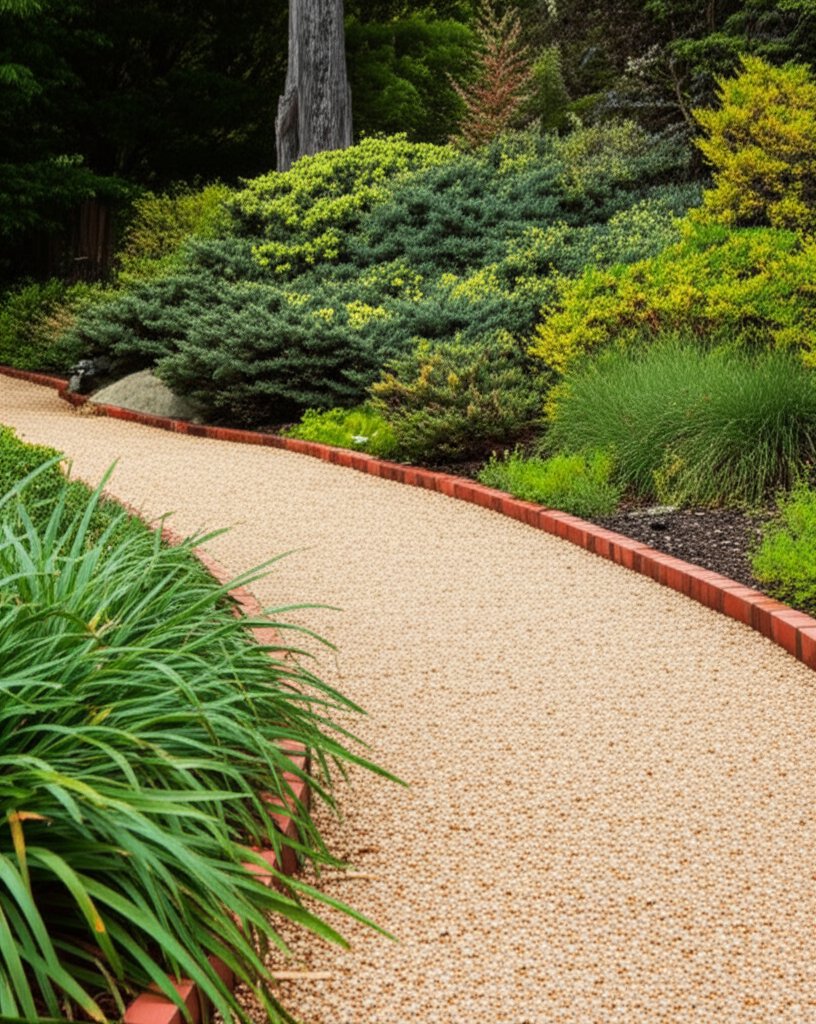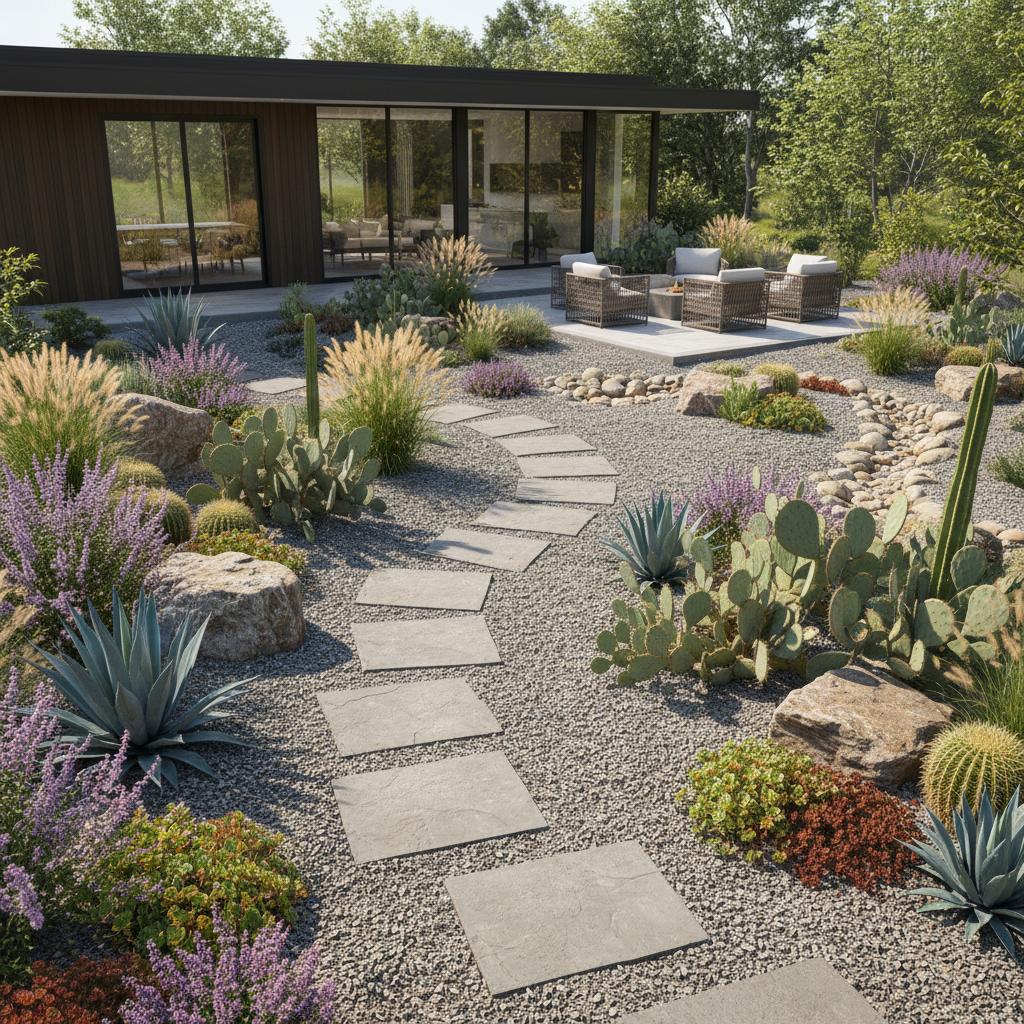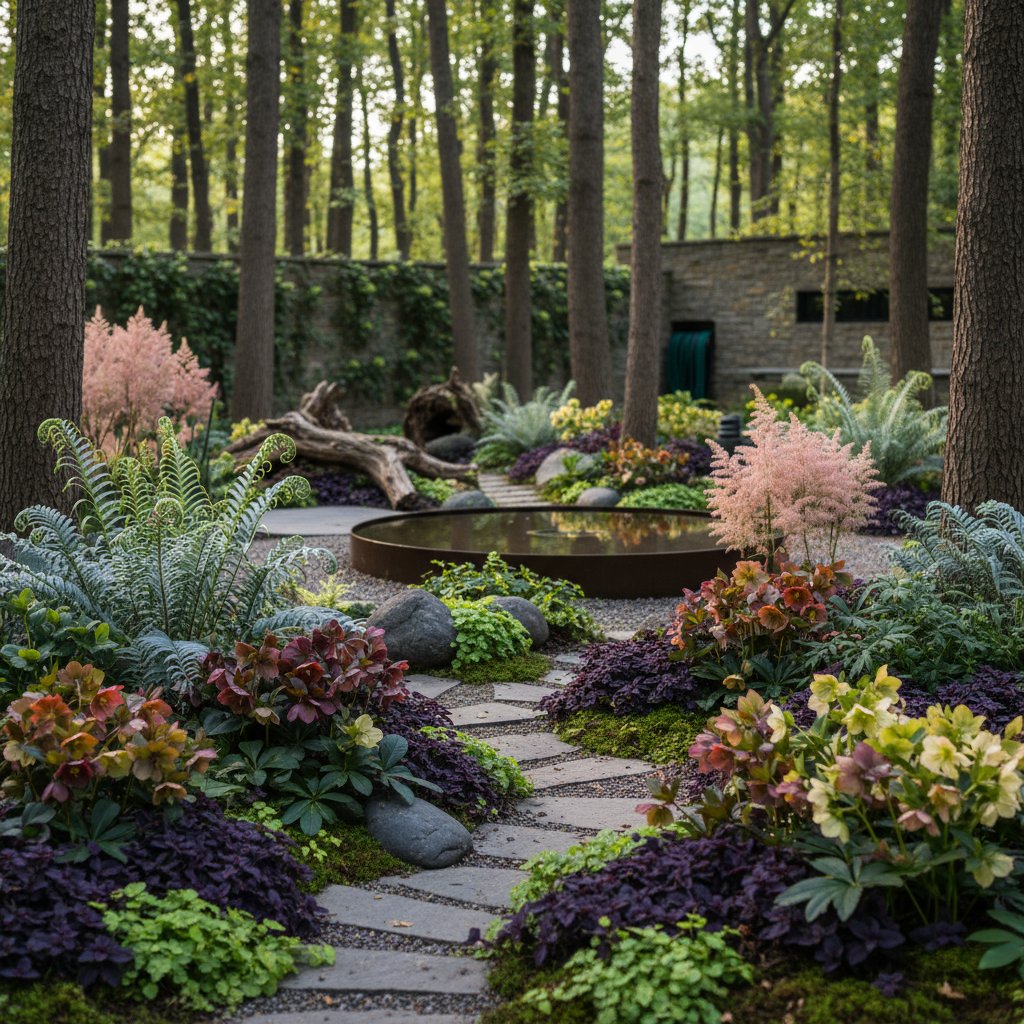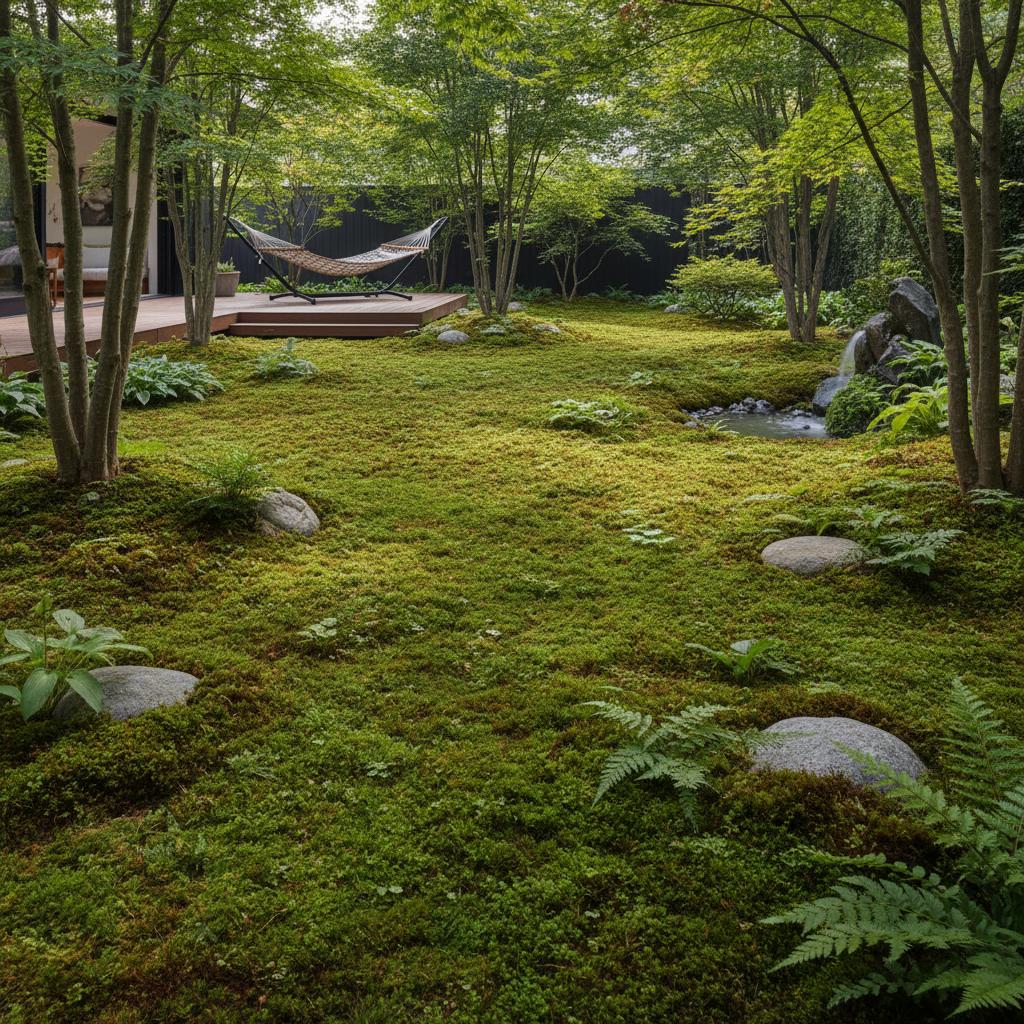Decomposed Granite: An Affordable Path to Garden Elegance
Many homeowners enter their yards and sense untapped potential amid uneven paths or lackluster grass. The prospect of expensive materials or intricate installations often deters progress. Decomposed granite emerges as a practical solution, providing texture, warmth, and style at a modest cost with minimal ongoing effort.
This crushed stone material has served landscapes for generations. Its earthy tones integrate seamlessly with diverse styles, from rustic cottages to contemporary designs. Proper planning enables decomposed granite to convert ordinary spaces into welcoming retreats that encourage frequent outdoor enjoyment.
Understanding Decomposed Granite
Decomposed granite, abbreviated as DG, consists of weathered granite reduced to fine, gravel-sized particles. It offers a tactile grit underfoot and appears in natural shades like gold, brown, and gray. The material compacts effectively to form stable surfaces while permitting water infiltration for drainage.
Gardeners encounter two primary varieties of decomposed granite:
- Loose DG: This unbound form suits casual applications such as winding paths, pet areas, or tree surrounds. Its yielding texture integrates smoothly with planted zones.
- Stabilized DG: Incorporating a binder during preparation yields a firmer result upon compaction, resisting displacement. Select this for defined patios, courtyards, or high-traffic routes.
Both variants deliver an authentic, enduring aesthetic. Selection hinges on intended use and expected activity levels.
Appreciating the Appeal of Simplicity
A garden rooted in its natural surroundings conveys serenity. Decomposed granite achieves this connection effortlessly. The faint gleam of its particles captures sunlight in a manner unmatched by concrete or tiles, promoting a deliberate pace during traversal.
Natural pigments in DG accentuate surrounding vegetation. Golden or rusty hues amplify foliage greens and floral vibrancy. In restrained designs, it introduces subtle depth without overshadowing botanical elements.
Applications vary widely: full patio coverings, bed outlines, informal lounging spots, or meandering trails. It fills interstices between pavers or edges elevated planters, fostering landscape cohesion through varied textures.
Evaluating Your Landscape
Examine your yard methodically before selecting materials. Traverse it deliberately, envisioning desired ambiance. Identify frequent routes from entry points to seating areas; enhance these for comfort. Pinpoint barren zones where turf struggles, ideal for decomposed granite intervention.
Document drainage patterns, sunlight exposure, and inclines. Decomposed granite thrives in permeable settings, so amend persistently wet areas with grading or amendments. Address depressions to direct runoff and prevent accumulation.
Gauge available area regardless of scale. Compact yards gain from slim herb-lined paths that impose structure. Expansive properties benefit from linking features like patios to fire pits via decomposed granite corridors.
Designing Intentionally
Align decomposed granite placements with your garden's overall scheme. Factor in home colors, bed contours, and preferred flora. The material must extend these components harmoniously.
Select shades that harmonize with your scheme. Warm golds or beiges complement brick or timber facades; cooler grays suit sleek builds or subdued plantings. Obtain samples from suppliers and evaluate them under daylight conditions.
Draft a basic diagram delineating path trajectories or seating perimeters. Incorporate borders to contain the material; options include metal strips, stone curbs, or timber frames. These prevent migration into adjacent turf or beds.
Site Preparation Essentials
Thorough groundwork guarantees longevity for decomposed granite installations. Remove vegetation, roots, and litter first. Smooth the subgrade to eliminate irregularities; incorporate 2 to 4 inches of coarse gravel base for enhanced support and permeability if the soil proves unstable.
Position and anchor edging securely to withstand compaction forces. Distribute decomposed granite uniformly to a 2- to 3-inch depth for paths and patios. Rake evenly, moisten lightly, and consolidate with a tamper or mechanical roller until solid.
For stabilized variants, blend the additive per manufacturer guidelines prior to application. Permit full curing before subjecting to weight. This methodical approach yields a refined base that signals impending enhancement.
Enhancing Functionality and Style
With the foundation secured, integrate elements that personalize the space. Decomposed granite complements flagstones for defined steps or integrates pavers for patterned interest. Position containers or seats to delineate zones further.
Illuminate pathways with subtle fixtures embedded along edges or under foliage. The material's diffuse reflectance produces a welcoming evening ambiance. Encircle seating with matching gravel to unify visuals and confine particulates.
The audible crunch underfoot provides sensory satisfaction. Such details elevate the garden's usability and allure.
Maintenance Strategies
Decomposed granite demands little upkeep, yet periodic attention preserves its condition.
- Surface Clearing: Rake or sweep periodically to dislodge leaves and debris, averting decomposition into stains.
- Material Renewal: Reapply a scant layer every 2 to 3 years to restore vibrancy and evenness where displacement occurs.
- Weed Control: Extract emerging growth promptly; employ manual removal or diluted vinegar solutions for persistence.
- Erosion Prevention: Monitor sloped sections post-rainfall; reinforce with edging or subtle regrading as required.
Consistent minor interventions ensure sustained performance across seasons.
Cost-Effective Implementation
Attractive landscapes need not incur premium expenses. Decomposed granite rivals pricier alternatives in aesthetics and resilience while incurring lower initial and labor costs. Simpler application processes further economize efforts.
Purchase in bulk cubic yards or smaller bags to scale with finances. Initiate with targeted zones like entry paths, expanding incrementally. This phased method permits gradual development without fiscal strain.
Modest undertakings yield disproportionate impact. A perimeter trail or alcove in decomposed granite reorients the yard's character through refined, unifying tones.
Innovative Pairings and Variations
Decomposed granite adapts to hybrid designs for textural diversity. Blend with pea gravel for nuanced footing, or accent borders with rounded river rocks. Achieve modernity via adjacent concrete slabs or metallic accents.
Softer motifs emerge when encircling pavers through blooms. The interplay of polished and coarse surfaces guides the gaze. Consider underlayment for swings or as a base for al fresco meals; versatility abounds.
Tailored integrations reflect unique narratives, rendering rustic informality or polished sophistication as desired.
Sustaining Your Garden's Evolution
Upon completion, immerse yourself in the space. Observe tonal shifts with light, tactile responses, and framing effects on greenery. Thoughtful execution rewards with authentic enhancement.
Decomposed granite matures gracefully, integrating as an inherent feature. Maintenance simplifies, weeds diminish, and leisure amplifies sans intensive labor. Seasonal progression enriches patina, mellowing contours and intensifying shades.
Gardens develop progressively, mirroring personal input. Decomposed granite supplies a reliable, economical bedrock for this ongoing journey.



